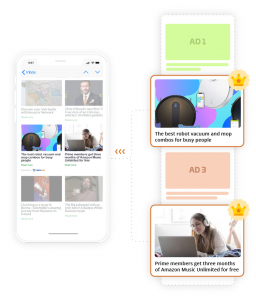Businesses these days trust that employee engagement is a necessary thing. It makes little sense that an unhappy workforce is as productive as a happy one. Saying that, just half of companies that have an employee engagement strategy are actually satisfied with the impact on performance, and research suggests that level of satisfaction has gone down over the last two years. So, what’s not working?
To answer that, we need to take a closer look at the current business cases for trying to engage your staff.
Half of companies that have an employee engagement strategy are satisfied
The business case for employee engagement
We know that retaining your top talent, especially in this post-recession, employee-driven jobs market, is critical to staying ahead of the game. And we know that, in broad terms, engaged employees boost productivity. Indeed, our most recent blog revealed the impact that a strong employer brand can have on the bottom line.
We also know that the economic cost of poor employee engagement can be in the hundreds of billions. And, given that the countdown on Britain leaving the EU effectively started last week, we know that there’s still a Brexit-shaped cloud of uncertainty hanging over the UK jobs market, with a potentially big HR problem on the horizon. Meanwhile, the millennial generation which dominates the current workforce is certainly not averse to job-hopping, for all kinds of reasons.
There’s still a cloud of uncertainty hanging over the UK jobs market, with a potentially big HR problem on the horizon
Engagement technology
There’s also an increasing amount of investment in new technology to support employee engagement. For example, just last week Facebook announced the launch of Facebook for Work with the view to connecting and engaging staff via Facebook (it’s separate to your personal Facebook account, don’t worry). As is often the case, if Mark Zuckerberg feels the need to compete on something then it’s probably got legs.
So it’s no secret why employee engagement has become a buzz phrase of modern business. Yet still, knowing the ‘why’ doesn’t necessarily translate into executing the ‘how’. What is an engaged employee and how do you know when you’ve got one? This all depends on the company’s specific needs and remit, but it’s often assumed that happy, satisfied employees are always effective and productive. In fact, an analysis by the Harvard Business Review, entitled The Dark Side of Employee Engagement, suggests that isn’t always the case.
It’s often assumed that happy, satisfied employees are always effective
The article outlines why “the correlation between engagement and performance outcomes is far from perfect”, even with what might seem like the best intentions.
Frustrated with the status quo
First of all, can it be said that positively minded, engaged employees are always the right people to help drive a business forward? Not necessarily. In fact, it seems that people who are optimistic and proud of their performance at work can have a tendency to rest on their laurels. They can be resistant to change because things seem like they’re going well. An engaged workforce might be proud of what it does yet too proud to admit there is always room to improve. This complacency could cause great companies to fall by the wayside with no tangible clue as to why.
An engaged workforce might be proud of what it does yet too proud to admit there is always room to improve
On the other hand, people who are frustrated with the status quo are generally driven to make things better. They’re incentivised to be creative and innovative. That’s not to say that happy people aren’t creative, far from it, but keeping a critical mindset brings focus and attention.
It’s also not to say that people who are striving to make positive changes are necessarily disengaged, but that is likely to be the case at times. Again – no one is actively willing people to be unhappy, but nurturing a culture of continuous improvement is a must when you consider your employee engagement strategy.
A culture of continuous improvement is a must
Employee burnout
There is also a risk that high employee engagement can lead to burnout. HBR cites a November 2009 study, published in the Journal of Applied Psychology, which suggests that employees can reach “a pervasive state of emotional attachment and motivation toward work”. In other words, too much of a good thing can mean that staff are so engaged with work that it significantly interferes with their work/life balance, potentially leading to fatigue and damaging productivity.
We also spoke recently about the need for better, more meaningful KPIs when it comes to employee engagement, essentially to stop businesses wasting resources. This is upheld by HBR’s analysis, which goes further to suggest that employee engagement strategies can become so wrapped up in their own minutiae, such as which new innovative HR technology to use, or which social media channels to occupy, that they lose sight of the only really important element – how employees are doing.
People have individual personalities and different ways of making themselves tick; how one person feels engaged can be markedly different to the next. More to the point, does that level of engagement actually translate to how they perform their job? There is a general agreement that happy team members deliver better customer service which leads to greater customer satisfaction. But being happy isn’t per se a necessity for a technical, problem-solving role, where some degree of dissatisfaction is needed to innovate. Happiness in this case is not a useful form of engagement.
How one person feels engaged can be markedly different to the next
HBR’s own research suggests that optimistic, happy, extroverted people tend to be more engaged, but that doesn’t necessarily equate to better productivity or a higher quality of work. Thus, hiring more of these sorts of people with the sole aim of creating an engaged workforce and therefore productive workforce may not be the most effective approach. It also effectively discounts people who tend to be more pessimistic or introverted, and who could be equally as good, if not better, at their jobs for exactly those reasons.
Extroverted people tend to be more engaged, but that doesn’t necessarily equate to better productivity
Did we forget personality?
What this tells us is that, in the melee of trying to address one’s employee engagement strategy, there’s a human element – a consideration of personality – that might be being forgotten. While an organisation is focused on its own need to stay up to date with its internal communications technology, the reason its employee engagement strategy isn’t working could be down to the fact that people’s individual personalities are being positively appeased, but perhaps not positively challenged.
What you need is an adaptive mindset and a strategy that balances keeping people engaged and ensuring they are operating effectively. In other words, you can’t necessarily build an employee engagement strategy based on making everyone happy.
You can’t necessarily build an employee engagement strategy based on making everyone happy
We always argue that internal communications are simply part of a good content strategy, where your audience is your own work family instead of customers and other external stakeholders.
So, firstly, the content itself: because internal communications and content strategy are one and the same, the same principles underpin how they work – namely, a persona-led strategy. Here at Southerly, we advocate elucidating exactly who your target marketing personas are before anything else, and the same goes for employees. It is this detail that informs what sort of content will resonate and engage them. It’s the foundation of strong content strategy.
Companies need to be wary of the kind of internal content that might appeal to the backend problem solvers versus the front of house service staff, and vice versa, and target it accordingly. That’s step one.
Stage two, however, is assessing the effectiveness of that engagement in relation to your business goals. It’s not just employees that need to be self-critical; it’s also the employer that needs to take a long, hard look at that content and figure out if it engages with a positive effect on productivity. Does it resonate to the degree that its recipients take progressive action – something that improves business?
It’s not just employees that need to be self-critical; it’s also the employer
Your employer content might be well-targeted; it might make someone feel proud of their work or their company. But does it prompt people to be proud of their work, with the mindset that there’s always room for improvement? Or does it pat them on the back and say “job done”?
There are myriad reasons for enlisting an employee engagement strategy in the modern world, but in doing so it can be easy to forget that at the heart of that strategy should be productive employees who are working towards a common goal and achieving the right results. If your team seem happy and satisfied, but your productivity is still waning, it may be time to ask yourself what your internal communications are telling them.
Business & Finance Articles on Business 2 Community
(28)






